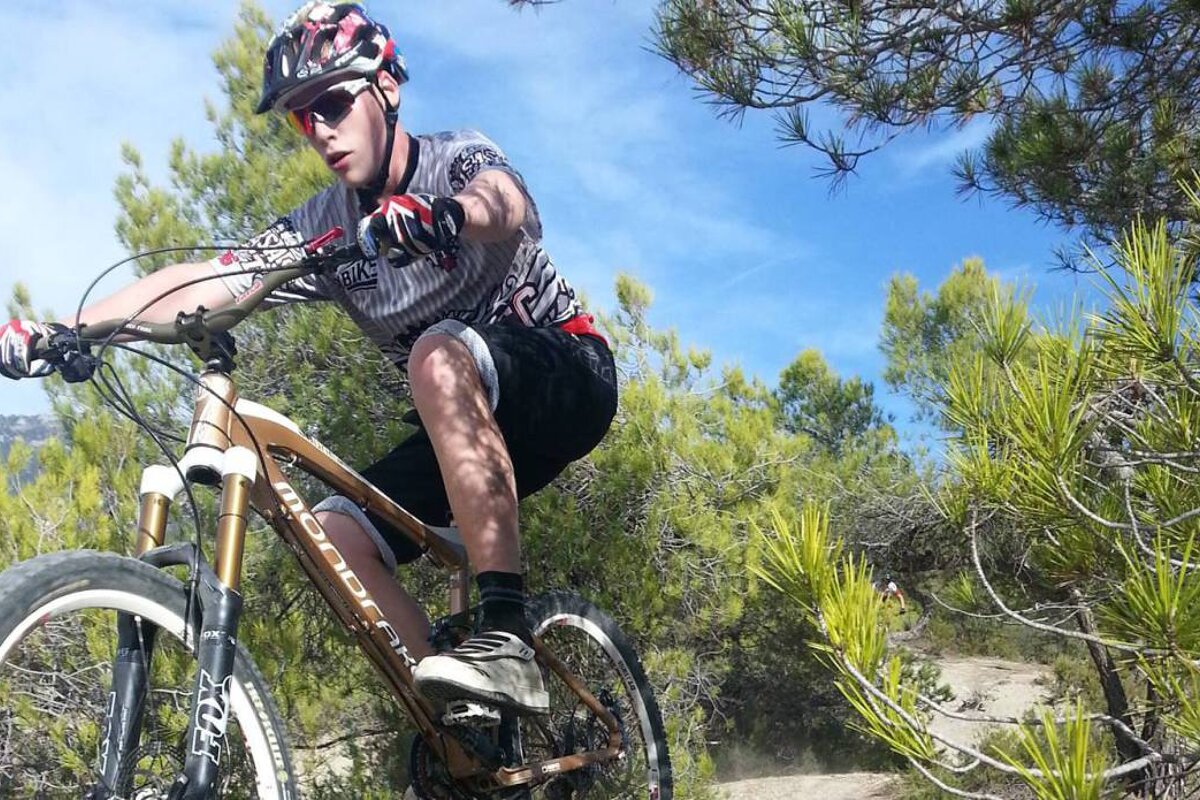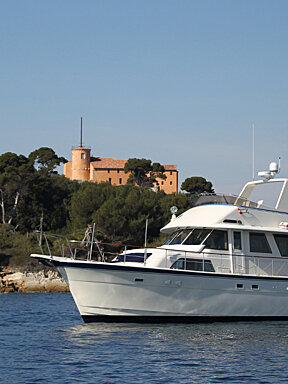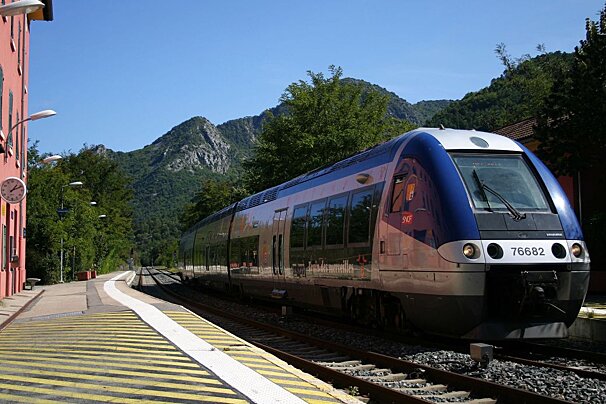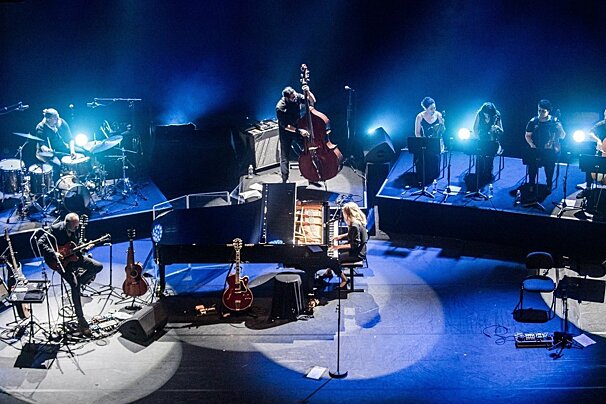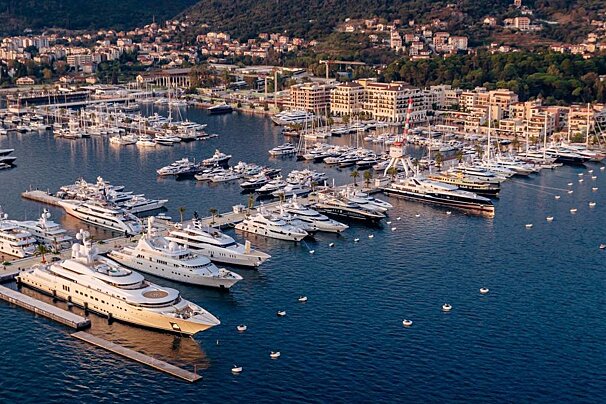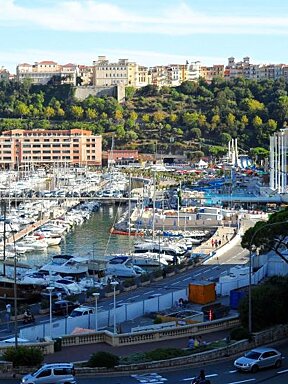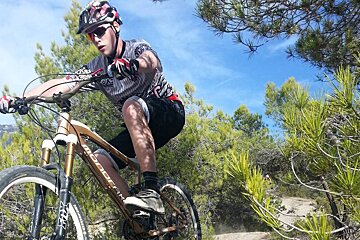
© Blausasc VTT
Mountain Biking in Monaco
Discover the top Monaco mountain-biking
The French Riviera countryside near to Monaco has a real mixture of terrain and trails - something for riders of every ability, from complete beginners to the hard-core expert downhill riders.
And if you don't have all the gear, you can rent it when you get here either through your accommodation provider or through local sports shops and mountain bike guides.
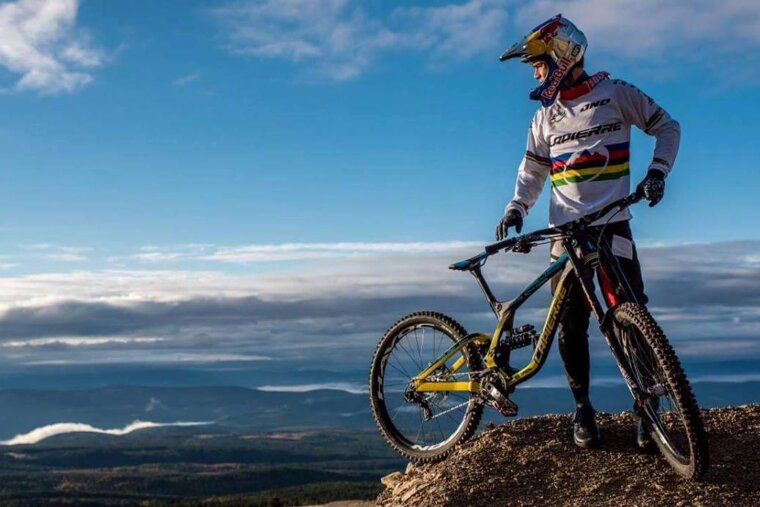
Biking routes
From dusty trails, rocky paths, the red cliffs of the Esterel and the pine forests that line the coast, you will have plenty of terrain and scenery to enjoy. You will find that in the Alpes-Maritimes there are several world class bike parks where the trails are designed and maintained for you to enjoy, some with lift access. And along the coast you can share the walking trails with hikers or head to the FFC (French Cycling Federation) waymarked and graded bike specific trails that adorn the coastal green spaces.
Several of the World's most famous downhill mountain bikers hail from this area, for example Loic Bruni, previous World Champion is from Cagnes sur Mer. You’ll find the terrain in the north incredibly varied with single track through limestone, wooded areas, and steep mountainous terrain that will satisfy the most extreme riders. The world famous downhill resort of Sospel is only 45 minutes to an hour away from Monaco in the Alpes-Maritimes.
The climate and geography of the area means there’s fantastic riding to be had all year round – in summer, the higher alpine resorts offer cooler air, whilst the mild climate during the rest of the year makes it a pleasure to enjoy the trails facing the sea.
We have compiled a list of some of the more popular biking routes in Monaco, concentrating on routes that are suitable for everyone, rather than hardcore mountain bikers. As Monaco has both mountainous and flat terrain, you can choose your route to suit your purpose - we promise you that there is something for everyone!

Hiring and Buying Mountain Bikes
Whether to go full-suspension or hardtail is a question which creates a lot of healthy debate amongst the mountain biking community. Whether you're renting or buying you should first decide which type you're looking for, and there are numerous makes and models of both types available.
So what's the difference?
Full-suspension: Both front and rear suspension that is effective at absorbing lumps, bumps and jumps, thus providing better performance and a smoother ride.
Pros:
- Much more comfortable and arguably more control over the rough stuff with more options to adjust to suit the terrain.
- You can make a full suspension bike ‘lock out’ when needed, so the experience is like riding a hard tail.
- Can handle larger drops and jumps.
- More forgiving and confidence-inspiring as they have a wider margin for error allowing you to ride above your skill level.
- Better tech beneath you - modern full-suspension frames are incredibly sophisticated.
Cons:
- It can be more energy intensive on the uphill unless you have a ‘lock out’ facility on the rear suspension to avoid ‘suspension bobbing' as you climb.
- A weight penalty for all that bump proofing suspension.
- Potentially more moving parts to repair should anything go wrong.
- Difference in price is quite significant.
Hardtail: A bike with no rear suspension. Suspension forks may be at the front of the bike but its back post is rigid.
Pros:
- In general, tend to require less maintenance and perform better on steep uphill climbs and sprints to the finish line.
- Inexperienced or beginner riders may prefer to start with a hardtail complete with front, lockable suspension.
- Good to get a feel for preferred type of riding before progressing to a full-suspension bike.
- On the whole more efficient as they're lighter, maintain speed and no energy is wasted compressing a rear shock as you pedal.
- Cheaper.
Cons:
- Because of the rigid frame you won't be able to make any adjustments.
- Less efficient on rough terrain, rather than rolling over, the rear tyre hops up off rocks and trees when on a rough trail.
- Less comfortable as those shocks and vibrations transfer through the bike into your body, using your arms and legs as shock absorbers which can be tiring.
- Less traction due to the rear wheel rebound on rough terrain.
Renting
If you plan on renting equipment then there are plenty of Monaco mountain bike hire shops hiring out both full-suspension and hardtail mountain bikes. On average you can pay anywhere between €16-€80 for a day's hire, depending on whether you select a bike with or without suspension. It's also possible to hire mountain bikes for children from around €15 a day.
Buying
There are numerous makes and models of both types available to the potential buyer so when deciding on which type of bike is best, it's important to consider the following:
- Your budget!!
- The type of riding you and your bike will be undertaking
- The typical terrain and angle of decent you will be riding
Bringing your own bike
If you bring your own bike then there's no point filling your excess baggage with spare bike parts (unless your bike requires specific specialist component parts). Monaco has some excellent biking shops that sell plenty of spare parts and components for your bike. However, remember the spares list does not extend to some obscure pivot in your one off special downhill rig. We're talking rear mechs, pedals, cranks, chains, cassettes, brakes, brake pads, cables etc from the more popular manufacturers. The exception to this rule is the rear gear hanger; bring one with you for your bike, especially if it’s of the super funky alternative/rare type. The bike shops do not carry this part for all the different bike manufacturers and models, and it's probably the most frequently damaged part in the event of a crash. Even a relatively innocuous fall can damage this part and although they can often be bent back into shape, it would be a shame to ruin your holiday if this were not the case.
Before you travel
It is highly advisable to ensure your own bike is in tip top condition before lugging it all the way over to France. A day riding here equates to many rides in the UK, and the wear and tear on your bike reflects this. If you start the week with your bike in a poor to average state of repair it will let you down at some point and spoil the day, if not the week's enjoyment. If you're not a competent bike mechanic then have your local bike shop service your pride and joy. It's also money well spent to upgrade your tyres if they are of the lighter weight cross-country variety, and purchase some free ride tyres with a 2.3 section to smooth your way and avoid the punctures. There is every chance a set of brake pads will disappear in a week, so bring a spare pair and carry them with you on the trails to avoid that metal on metal effect! If you run out of time before you come away, Monaco local bike shops will be able to carry out a service for you.

Equipment for cycling
When out and about on the trails, here's a checklist of what you will need:
- Water - One of the biggest problems you'll experience in this region is the heat. Fit two bottle cages to your bike and take 750ml bottles containing electrolyte drinks.
- Sun Cream - Don't forget that summer is very hot here, which means you will burn quicker than at home.
- Windbreaker - Although it may be warm at sea level, the temperatures can drop rapidly as you climb, and the weather can change quickly and rapid descents can cool you down fast.
- Snacks - Energy bars and gels are a very good idea if you're planning a day out.
- Mobile Phone - Being able to contact someone to pick you up if your chain breaks is helpful.
- Money - You may need it in an emergency or just for a beer at the end of the day.
- Basic Repair Kit - You can't fix everything by the side of the road but not all breakdowns require the day to end.

Flying with your bike
A review of the main airlines' Terms and Conditions, in relation to sports equipment/baggage, indicates that it's highly likely that you will be subject to a charge for taking your bike on board. Easyjet, Aer Lingus, Ryanair, and KLM all charge an additional one-way fee to carry your bike. At time of writing British Airways (and their partner Swiss Air) does not charge extra fees for taking bikes on their planes, providing they fit within the free baggage allowance and are packed in a hard shelled container, but we recommend you always check when booking.
Make sure that the combined weight of your luggage does not exceed your allowance. Although you may have paid an excess for your bike, its weight may be added to the weight of your hold luggage and there can be a penalty for any kg over the allowance.
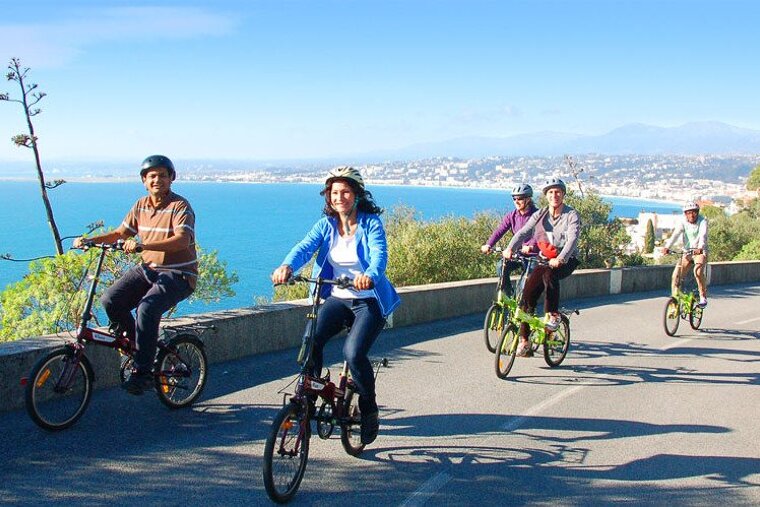
Packing your bike for a flight
There are a few options available in transporting your bike. The rules and regulations of flying with a bike do vary massively across the carriers, so it's crucial that you follow their guidelines, and recheck them every time you fly as they can change quite frequently. On their websites you should find a sporting equipment or special baggage page where you'll find their policies. Generally speaking most airlines will require you to bag or box your bike, and contact them in advance to confirm/reserve your bike's spot on the flight.
Hard bike boxes tend to cost in the region of £300+ and like a hard case suitcase it will minimise the risk of damage occurring to your bike, but they are heavier. A soft bike bag is the cheaper option, costing around £100, but its protection is not as reliable as the hard box.
Most airlines stipulate the following:
- Bikes should be contained within a protective box or appropriate bike bag.
- Only one bike should be carried per box/bag, and no other items (except protective padding) should be included within the box/bag.
- Handlebars and pedals must be fixed sideways against the frame or removed.
- Tyres should be deflated slightly to reduce the risk of damage.
If you're transporting your bike, you should also check out your travel insurance arrangements. A lot of travel insurance companies will not cover your bike without an additional excess payment, and a lot of airlines will not be held responsible for any damage sustained whilst the bike is in their care. Check out your household insurance policy to see whether it can be covered as 'contents away from home'. There may be a slight surcharge for this option, but it's potentially better than having to fork out for a new bit of kit, or a brand new bike.
Bike packing options:
- Cardboard bike box - pick up for free from many cycle shops, call in advance to make sure they have one. Be sure it's long enough to fit your bike. Remove the pedals, front wheel, seat post and handlebars. The front wheel can be placed beside the bike in the box and the handlebars taped against the frame. Tape the pedals and seat post to the frame too so they won't fall out should the box get ripped in transit. These boxes are ideal to travel with, you can recycle it on arrival and get a new one before you return home. These can be a nightmare to move around where there aren't any luggage trolleys available.
- CTC bike bag - heavy-duty polyethene bag designed for bikes, you'll need to deflate the tyres, remove the pedals and turn the handlebars inwards, but likely you won't have to remove the wheels. You can even get see-through ones, which may entice baggage handlers to treat it with respect as they can clearly see a bike is in there. These bags offer little protection against damage so be sure to add pipe lagging to the frame tubes and tape the rear derailleur to the inside of the chainstays. Not all airlines will accept these bags, due to their lack of protection, so check before you buy one.
- Dedicated bike bag - Either hard or soft case, the former providing more protection against damage, they have padding in all the right places. They're good if you're staying somewhere you can store it easily, as they aren't flat-pack. Some come with wheels so you can pull it easily through the airport.
Top Tips:
- Put all your clothes in plastic bags and use them to pad the bike, this works well especially with a 30kg weight limit.
- In addition to bubble wrap (and clothing), purchase some pipe lagging and zip ties from a DIY store to put around the frame of the bike for protection during transportation.
- If you don't have your original cardboard bike box, ask your local bike shop for one. If you have the choice always use the manufacturer’s box and your bike should arrive safe in one piece.
- The most frequently damaged part of a bike is the rear gear hanger. Remove the rear gear mechanism and tie wrap loosely to the frame to avoid this scenario. This applies almost equally to disc brake rotors if your bike sports them. Take them off, likewise pedals, it's only a five minute job and will prevent you engaging in a fruitless search for an obscure part in resort.
- Print out the airline's policy on carrying bikes and have it ready to politely show at check-in if necessary. Also if you've booked your bike on the flight, make sure you receive proof of this, and then print it and carry with you when you travel.
- Leave yourself extra time at the airport to allow for any check in issues.
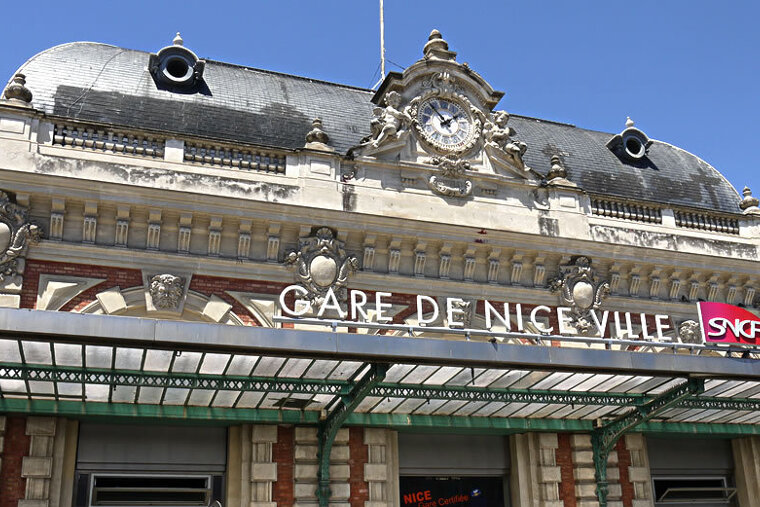
Taking your bike on the train
Going on holiday to France with your bike is pretty straight forward, but as with a lot of things, it's better to book in advance.
The Eurostar
Currently only allows you to take your bike on selected trains between London and Paris, so it's best to book early to avoid disappointment. At the time of writing, Eurostar was working on reopening the service to other destinations in the near future, so check available routes before you start planning.
Here's how:
- You must reserve a place for your bike on the train in advance of travel (subject to availability). Your bike needs to be registered as oversized luggage and the booking process is two-tiered. First you must book your ticket, and then call or email them separately to find out if there is space on the train you have booked. If there is no space on your chosen train, it may be possible for the bike to travel on an earlier train and be available for collection upon your arrival.
- You should be able to take your bike either fully assembled or boxed. Eurostar can provide boxes and there are tools to break down your bike at its stations in London and Paris, or alternatively you can use your own bike bag or box and it will be recognised as 'luggage' rather than a bike. If your bike is placed in a suitable bike bag no longer than 85cm, you can carry it on board as part of your baggage allowance.
Once you're in France getting around with your bike can be straight forward, but again planning ahead and getting to the station early are highly recommended.
Domestic or regional trains (TER) and tourist trains
Quite often they allow you to transport your bike for free, although you may have to put it in a bike compartment, hang it from a hook to save space, or fold it up and take it on as hand luggage. Spaces are limited and you cannot reserve in advance, and in some regions bikes aren't permitted Monday-Friday during rush hours as the trains are too busy with pedestrians.
TGV InOui
You must book a space for your bike if it's non-folding and this needs to be done when you buy your ticket. Your seat will automatically be placed near to the bike rack. If there's no option for a bike to travel with you it means the train in question does not have space available. If your bike is foldable or dismantled in a bike bag it can travel for free without a specific reservation as long as it fits the dimensions: 130x90cm.
Regional trains
In Ile-de-France, (the region surrounding Paris), these trains are called Transilien and they are the country’s busiest commuter trains. They operate into all of Paris’ stations and run on lines with a letter associated (line K, line P, etc.). They also include the RER trains, which run on lines A to E. You can take your bike on board a Transilien Monday-Friday, before 06:30, between 09:30 and 16:30, then after 19:30; at any time on weekends and public holidays and at any time if it's folded or placed in a bike bag and does not cause fellow passengers any inconvenience.
Intercity trains
It's best if you can dismantle your bike and carry it on in a bag no more than 130x90cm. Some of these trains require a seat reservation, whereas others do not. Consequently, according to the type of train, it may or may not be necessary to book, or pay, for a place for your bike.
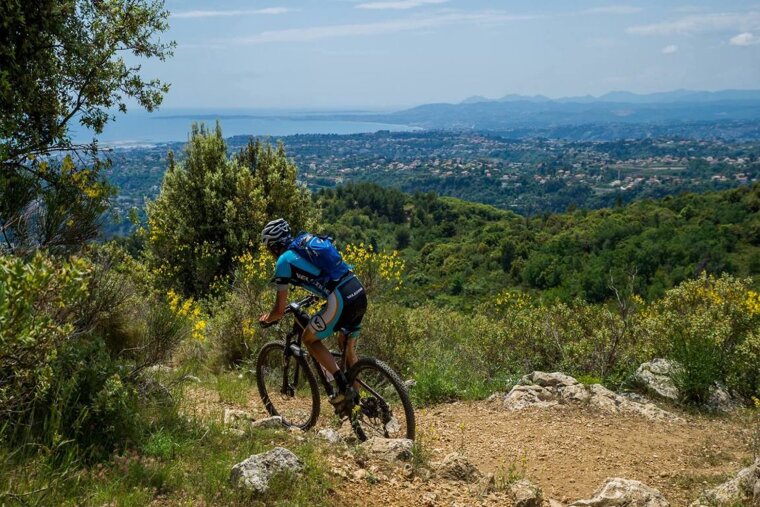
Races & events
The Transvésubienne Mountain Bike Race
Solo, duo, relay, mountain bike, e-bike. Everyone is allowed to access the course for this race via the most beautiful trails of the Alpes-Maritime.
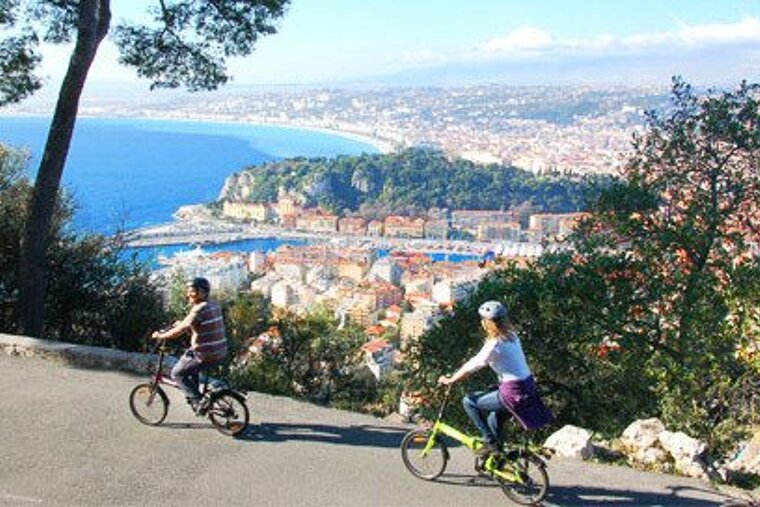
E-Mountain Bikes
This is an industry that has seen incredible interest and growth, post-pandemic, largely due to rising technological advances and rapidly charging batteries, and it being a cheaper alternative to mainstream transportation. People are more aware of the health benefits, and consider e-bikes as the eco-conscious alternative to motor vehicles, with policymakers developing cycling infrastructures across towns and cities the world over. Over 25% of money spent on mountain bikes in 2020 was on e-bikes. Specialized - one of the big three - was one of the first to introduce e-bikes to their mountain bike line-up, and now almost every bike brand has several eMTBs on offer with their ranges.
The industry does suffer from supply issues, and since Covid supply chains from Asia have become complicated, transit times have doubled and container costs more than quadrupled. So when you find the eMTB for you, be aware you may have to wait quite a while for it.
What is an eMTB?
A mountain bike with an integrated motor that assists the rider when pedalling. There isn't a throttle, so if you don't pedal there is no power, and they only provide support up to a certain speed limit: the speed limit in Europe is 25km/h and 32km/h in North America. Within the choices of hardtail or full-suspension there are three distinct categories: Light, All-round, and Power. They come with all the things a traditional mountain bike has, but are heavier and have distinguishing features such as an electric motor, a battery pack, and a handlebar-mounted computer that controls it all. The assist modes consist of: off, low (barely helps), medium, eco, and a battery-draining sport/high mode.
There are some things to consider when buying an eMTB, here are a few:
- Full-suspension or hardtail? According to the experts there is no good reason to ride a hardtail, unless you only ride on well-maintained roads or in the city. The more affordable price and lower maintenance costs are the main reasons you may buy hardtail.
- How much travel? This refers to the suspension and is a measurement of how much a wheel can move to absorb bumps. As a rough guide 130-170mm is ideal for all-round use. Bikes with less are usually trekking bikes, and is more suited to extremely demanding terrain.
- How much are they? Very manufacturer dependent, a full-suspension eMTB will set you back at least €4,500-5,000, but the sky's the limit. Hardtails usually come in around €1,000 cheaper.
- What is the range? Heavily dependent on battery capacity, the mode selected, rider weight, and elevation profile.
Key terms:
- Battery capacity - indicated in watt-hours (Wh). Depending on the bike this varies from 250Wh-1,000Wh.
- Motor output - specified in watts.
- Torque - measured in newton metres (Nm) and describes the driving force with which the motor supports the rider when pedalling. The higher the torque, the more assistance.
- Wheel size - 27.5", 29" or a mix of the two are the three common wheel size combinations.
- Suspension - depending on the purpose and model this varies between 100-200mm.
Fat tyre eMTBs
You'll see these around the trails from time to time, and simply put they are an eBike with tyres of four inches plus in width. Designed primarily to ride over snow, the heavy-duty tyres gives a greater ability to travel over more surfaces than bikes with a normal tyre width, such as snow, dirt, sand, wet stone, loose ground like leaves, twigs and rocks, and pavements or parks. They improve balance and stability on any type of terrain, and are therefore perfect for those who want more versatility and comfort, as comfort is definitely their greatest advantage. Rising in popularity, they can be harder to handle on the trails as their braking isn't as precise and performance isn't as good as with a bike on regular mountain bike tyres. Also worth remembering is that by having fat tyres, the frame, rim and axles are bigger and heavier, which isn't ideal for everyone.
Sharing the same trails
There has been some controversy in some areas around eBikes sharing the same trails as mountain bikers, hikers, horse riders etc., and in some countries and states they are banned from non-motorised mountain bike trails.
The majority of rental shops in resort will have e-bikes available for hire should you wish to try this fast-emerging sport for yourself... just be warned, it's addictive.
More inspiration...
For information on individual itineraries and bike parks, see our mountain biking routes.
